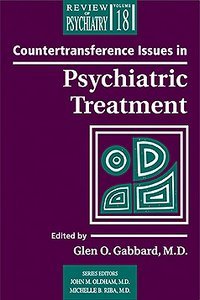Countertransference Issues in Psychiatric Treatment
View Pricing
Description
In psychiatry, clinicians recognize the influence of their own personal characteristics on the assessment and treatment of their patients. No interactions in psychiatry are entirely free of countertransference dynamics. Most major theories point to countertransference as a jointly created phenomenon involving feelings induced by the patient combined with the conflicts and preexisting self and object representations that the clinician brings to the encounter.
Countertransference Issues in Psychiatric Treatment provides an overview of theory and technique that gives the reader a detailed account of how countertransference is used in contemporary practice. This timely reference
- Illustrates the usefulness of examining countertransference issues in a wide range of psychiatric settings, including pharmacotherapy, consultation-liaison settings, and forensic facilities
- Explores the specific countertransference dynamics evoked when clinicians treat suicidal borderline patients and the common countertransference problems confronted when treating antisocial and violent patients
- Describes the difficulties encountered in general medical settings when physician-assisted suicide is considered as an acceptable clinical intervention
- Breaks new ground in considering psychiatrist's emotional reactions to the patient as an integral part of psychiatric practice and discusses some of the current controversies about countertransference
- Reviews cutting-edge psychoanalytic theory involving subjectivity, projective identification, role responsiveness and countertransference enactments
Whereas most literature on countertransference is geared toward psychoanalysis and dynamic psychotherapy, this volume illustrates how countertransference issues must be considered in every clinical setting in which a psychiatrist works. It is an excellent introduction to the topic for psychiatric residents and medical students.
Contents
- Foreword. An overview of countertransference: theory and technique. Countertransference in the treatment of the suicidal borderline patient. Countertransference in general psychiatry. Countertransference issues in the treatment of antisocial patients. Countertransference and assisted suicide. Index.
About the Authors
Glen O. Gabbard, M.D., is Professor and Director of the Baylor Psychiatry Clinic at the Baylor College of Medicine and Training and Supervising Analyst at the Houston-Galveston Psychoanalytic Institute in Houston, Texas. He was previously Director of the Menninger Hospital in Topeka, Kansas. Dr. Gabbard is the author or editor of sixteen books and currently is joint Editor-in-Chief and Editor for North America of the International Journal of Psychoanalysis. His numerous awards include the 2000 Mary Sigourney Award for outstanding contributions to psychoanalysis.
Related Products
Carousel Control - items will scroll by tabbing through them, otherwise arrows can be used to scroll one item at a time







